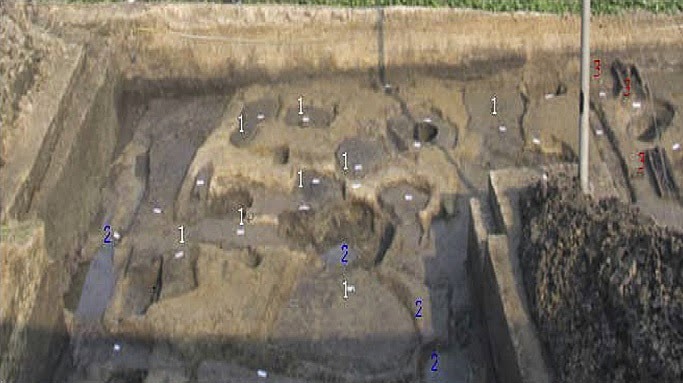The use of fire is thought to have played an important role in the development of paddy Rice agriculture in the Neolithic of eastern China. Fire can play an important role in agriculture both in enhancing the fertility of the soil, and in removing unwanted weeds prior to the planting of desired crops (although it is discouraged or illegal in most modern societies, including China, due to the associated smoke and fumes). In paddy agriculture this is combined with periodic flooding of fields.
In a paper published in Journal of Archaeological Science in January 2013 a team of scientists led by Linchao Hu of the College of Resources and Environmental Sciences at Nanjing Agricultural University and the Changzhou Academy of Environmental Sciences discus the results of an investigation into an ancient paddy-field system at Chuodun in Jiangsu Province on the Yangtze River Delta.
The Chuodun archaeological site was discovered in 1961 by archaeologists from the Nanjing Museum, and has been periodically excavated by archaeologists from the Nanjing Museum, Suzhou Museum and Kunshan Cultural Relic Administration Office ever since. The site contains several layers of Neolithic remains dating from between about 7000 and 3000 years ago. The paddy field remains come from the Majiabang Culture layer, dated to approximately 6280 years ago.
The approximate location of the Choudun excavation. Google Maps.
The Majiabang Culture layer of the Chuodun archaeological site has yielded human habitations and tombs as well as numerous paddy fields and an accompanying drainage system. The layer has also produced numerous animal remains, including Deer, Pigs, Buffalo and Elephants, as well as numerous fossil Rice grains and remains of other useful plants, such as Reeds and Millet.
Fossil Rice grains were found in the Choudun Majiabang Culture layer at a density that heavily implied deliberate planting of Rice plants. Numerous fire-burned grains were discovered, with degrees of burning that could be replicated on modern japonica Rice grains by heating them to temperatures that could be achieved by the burning of Rice paddies. Numerous ash layers were also found in soils at the site, in layers that are also consistent with periodic burning. Thus while it cannot be conclusively established that the fires at the Choudun site were deliberately set, it does appear that periodic burning of fields played an important role in agriculture at the site during the Majaibang period.
Distribution of ancient irrigation paddy fields at Chuodun Site. (1) Ancient paddy fields, (2) Ridges and ditches, and (3) the skeletal remains of ancient people. Hu et al. (2013).
See also…
Follow Sciency Thoughts on Facebook.





